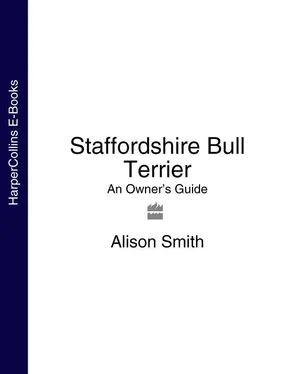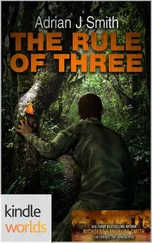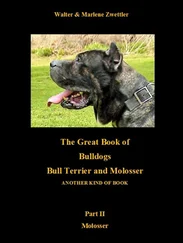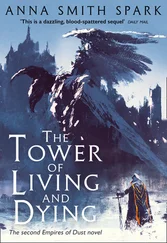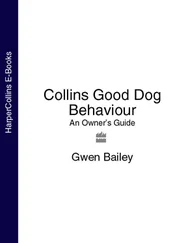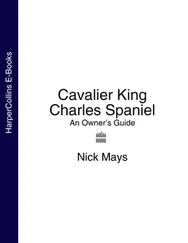Around this time the breed was expanding rapidly in numbers and was sought after both as a pet and as a show dog. Whilst its origins were still very much to the fore, its popularity in the show ring meant that it was seen by many more people, as quite often the dog shows were held in conjunction with local agricultural shows, which attracted hundreds of visitors.
Challenge Certificates (see page 88) were granted to the breed by the Kennel Club not long afterwards, and the first Stafford to be awarded this high honour was a beautiful dog called Gentleman Jim at the Birmingham National championship show, which is still held in the UK every year.
In 1936, the breed was given its own class at Crufts Dog Show, and this was won by Cross Gunns Johnson, owned by Joe Dunn. In June 1946, the Southern Counties Staffordshire Bull Terrier Club held the first championship show purely for the Stafford, and breed fanciers saw an incredible entry of 300 dogs, which was testimony again to the growth in the breed’s popularity.
Other dogs worthy of note at this time were Champion Gentleman Bruce, Champion Wardonion Corniche and Champion Brindle Crescendo of Wychbury. Pictures of them show a dog that had by now become much more uniform in appearance, although still perhaps a little taller than it is now.
The breed internationally
Nowadays the breed is very popular the world over. From America to Australia, from Russia to Argentina, the Stafford is revered as a wonderful pet and successful show dog. Sadly, however, there are some countries where the breed is the target of what is known as Breed Specific Legislation (BSL). This legislation came about because of a general confusion over the Staffordshire Bull Terrier and other breeds, namely the Pit Bull Terrier and several crosses of other breeds with the Stafford. Unfortunately, the physical similarities between these breeds can sometimes appear to be quite close to the uninitiated, although to the trained eye there are many differences.

As a responsible owner, you will spend many happy hours with your well trained Stafford, walking him and playing.
The German government tried to ban the breed across the European Union in September 2000, but luckily the intervention of the UK Kennel Club stopped this happening. The breed was banned in Ontario, Canada, in August 2005, and several other countries are closely watching the breed known as the Pit Bull Terrier. Therefore it is important that all Stafford owners behave very responsibly to avoid their breed being placed in the same category.
As a responsible Stafford owner, the 1991 Dangerous Dogs Act (DDA) is extremely unlikely to affect you or your dog. Owning a pedigree Stafford is perfectly acceptable in the UK. However, you must always make sure that your dog’s pedigree and Kennel Club papers are available, as sometimes authorities with little expertise in the breed can confuse them with banned breeds. It is also worth bearing in mind that the Stafford is banned or under severe legal restriction in Germany, Israel and Canada. Legal restrictions can take the form of muzzling your dog in public, having to obtain a special licence, a ban on breeding and/or selling and, possibly, even having to take out special insurance for your dog.
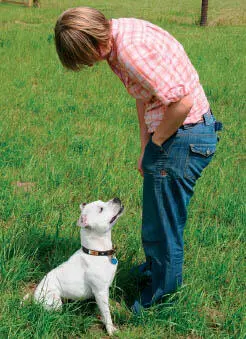
This owner has total control over her Stafford, who is displaying his full attention. Never allow your new dog off the lead until you have full control over him.
The problem that the DDA does pose to Stafford owners in the UK is that a Stafford may physically resemble the Pit Bull Terrier to a person who is unfamiliar with the breed, which may be confusing to the uninitiated. Never allow your dog to run wild in open spaces until you are 100 per cent sure that you have full control over him, and never encourage him to display any aggression towards people or other dogs. For more information on the Dangerous Dogs Act, see page 126
.
General appearanceSmooth-coated, well balanced, of great strength for his size. Muscular, active and agile.
CharacteristicsTraditionally of indomitable courage and tenacity. Highly intelligent and affectionate, especially with children.
TemperamentBold, fearless and totally reliable.
Head and skullShort, deep through with broad skull. Very pronounced cheek muscles, distinct stop, short foreface, nose black.
EyesDark preferred but may bear some relation to coat colour. Round, of medium size, and set to look straight ahead. Eye rims dark.
EarsRose or half pricked, not large or heavy. Full, drop or pricked ears highly undesirable.
MouthLips tight and clean. Jaws strong, teeth large, with a perfect, regular and complete scissor bite, i.e. upper teeth closely overlapping lower teeth and set square to the jaws.
NeckMuscular, rather short, clean in outline gradually widening towards shoulders.
ForequartersLegs straight and well boned, set rather wide apart, showing no weakness at the pasterns, from which point feet turn out a little. Shoulders well laid back with no looseness at elbow.
BodyClose-coupled, with level topline, wide front, deep brisket, well sprung ribs; muscular and well defined.
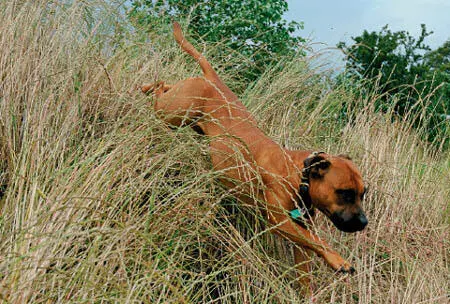
Boldness and courage are two words that are often used to describe the breed.
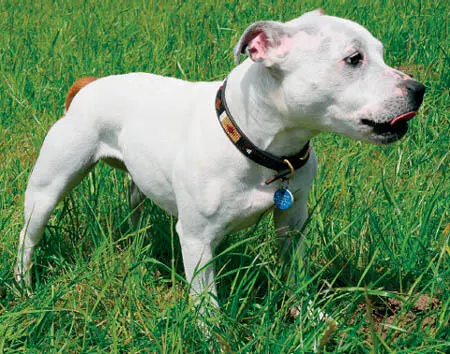
The Stafford is a strong dog with a distinctive head and a very muscular body.
HindquartersWell muscled, hocks well let down with stifles well bent. Legs parallel when viewed from behind.
FeetWell padded, strong and of medium size. Nails black in solid coloured dogs.
TailMedium length, low-set, tapering to a point and carried rather low. Should not curl much and may be likened to an old-fashioned pump handle.
Gait/movementFree, powerful and agile with economy of effort. Legs moving parallel when viewed from front or rear. Discernible drive from hindlegs.
CoatSmooth, short and close.
ColourRed, fawn, white, black or blue, or any one of these colours with white. Any shade of brindle or any shade of brindle with white. Black and tan or liver colour highly undesirable.
SizeDesirable height at withers 35.5–40.5cm (14–16in), these heights being related to the weights. Weight: dogs: 12.7–17kg (28–38lb); bitches 11–15.4kg (24–34lb).
FaultsAny departure from the foregoing points should be considered a fault and the seriousness with which the fault should be regarded should be in exact proportion to its degree.
NoteMale animals should have two apparently normal testicles fully descended into the scrotum.
Читать дальше
